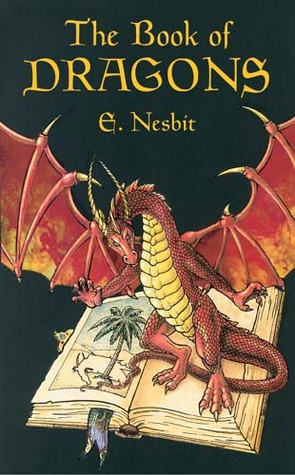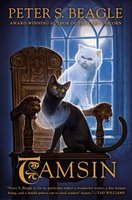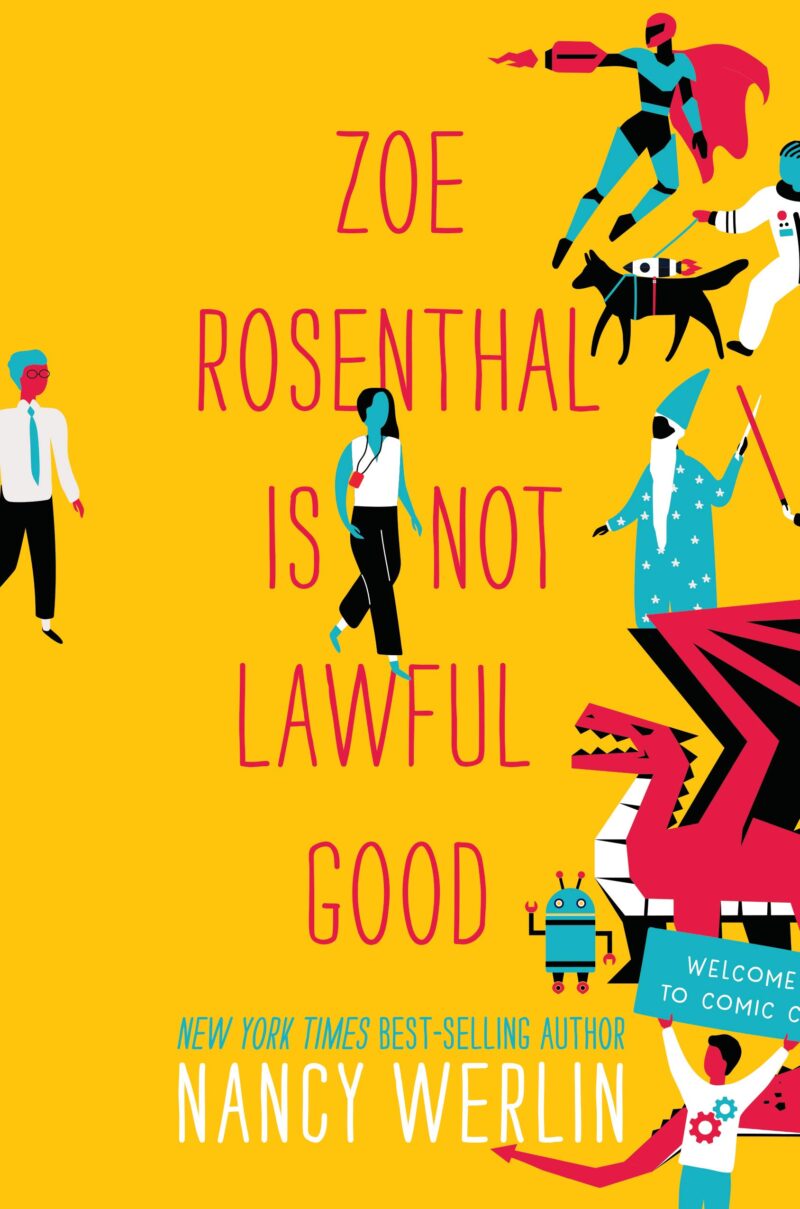[button color=”black” size=”big” link=”http://affiliates.abebooks.com/c/99844/77798/2029?u=http%3A%2F%2Fwww.abebooks.com%2Fservlet%2FSearchResults%3Fisbn%3D9781587171062″ target=”blank” ]Purchase here[/button]
In this series of eight short stories, written in 1900 for The Strand magazine, Edith Nesbit pulls off a virtuoso performance in imagining an unheard-of variety of dragons, princesses, silly children, and other magical creatures.
In “The Book of Beasts,” little Lionel is pulled away from building a palace out of blocks in his nursery, to be made King. But at first it seems he will be a naughty little king, insisting on opening a magical book previously owned by his wizard great-great-great-great-grandfather. And every time he opens it, a magical creature escapes from one of the pages. At first they are harmless little things, but soon enough a dragon gets out. The kind of dragon who comes to town every Saturday and eats, say, a soccer team or an orphanage to tide him over for the week. What can Lionel do to win back his citizens’ love? He must open the book again and find a beast that can help him beat the dragon!
“Uncle James, or The Purple Stranger” tells the fanciful story of an island that “turned the wrong way” in the prehistory of the world, and as a result all the animals are the wrong size. Elephants are lap-sized pets, and guinea pigs are unspeakably huge. But the people are the right size, and little Princess Mary Ann thinks Tom the gardener’s son is the right boy for her. He proves it when he cleverly saves the princess from being given to a purple dragon as a birthday gift by her evil Uncle James. (“Magicians are always bad, as you know from your fairy books, and some uncles are bad, as you see by Babes in the Wood, or the Norfolk Tragedy, and one James at least was bad, as you have learned from your English history. And when anyone is a magician, and is also an uncle, and is named James as well, you need not expect anything nice from him. He is a Threefold Complete Bad-and he will come to no good.”)
In “The Deliverers of Their Country,” a nationwide plague of dragons begins with a tiny gnat-sized one getting in little Effie’s eye. Soon the country is overrun with dragons ranging in size from the kind that get in your tea to the kind that eat elephants. For Harry and Effie, the worst kind are the dining-room-sized ones that eat children. Soon no one dare go outside by day (since dragons sleep by night.) But finally Harry and Effie risk it, first to attempt to wake St. George, then to do what he tells them they must do to put an end to the dragons. (Where I live, the “tap room” has only two taps: Sunshine and Dust.)
“The Ice Dragon, or Do As You Are Told,” is one of Nesbit’s subversively gentle morality tales in which she pokes fun at the consequences of children being disobedient. George and Jane disobey their parents’ command not to walk on the wet grass on a December night, and end up going all the way to the North Pole. And what should they find curled up around the North Pole, but a sleeping ice dragon! Next thing they know, George and Jane are surrounded by a tribe of Sealskin Dwarfs who want to wake up the dragon to eat everyone else in the world. Luckily the children did good turns for a white grouse and an Arctic moth on their way to the Pole…
“The Island of the Nine Whirlpools” is like a classic fairy tale. A queen goes to a witch to find out how to have a child, but when the child turns out to be a girl, the king (who is also a wizard) is incensed. He condemns the princess to a Lone Tower on an island surrounded by nine whirlpools, to be guarded by a Griffin and a Dragon until such time as a suitor clever enough to get past all these obstacles comes to win her hand. Hundreds of years pass in the outside world while no time goes by for the princess, and her mother and the witch are turned into stone. Until (there has to be an “until”) along comes Nigel, a fisherman’s boy, who does what many a prince failed to do…
In “The Dragon Tamers,” a poor blacksmith living in a ruined castle gets the fright of his life when a dragon crawls out of the deepest dungeons. But he soon tricks the dragon and saves the village from being eaten. Years later, the blacksmith’s son Johnny and the neighboring whitesmith’s girl Tina pull another fast one to get the dragon to drive off a giant that threatens their town, and to chain him up again. But what the dragon turns into after a diet of bread and milk will simply make you laugh till the milk shoots out of your nose.
“The Fiery Dragon, or The Heart of Stone and the Heart of Gold” features the princess Sabrinetta whose heart of gold makes her immune to being eaten by dragons, the clever pigkeeper named Elfin who wins her heart, and the ever-so-aptly-named Prince Tiresome who tries to put one over both of them. Now you have to wonder about parents who call their child Tiresome. There must be some truth in the saying that your name can shape your destiny. But the one really fiery dragon of this anthology is interesting too, because of the way it changes size and resists all efforts to kill it. And even more interesting, perhaps, is Elfin’s courtship of the princess, and his destiny which raises eyebrows for fans of a later, greater pigkeeper (see The Prydain Chronicles).
Finally, there is “Kind Edmund, or The Caves and the Cockatrice,” introduces another silly, subversive hero-a little boy named Edmund who often plays truant from school and tells tales that get him caned when he doesn’t. He doesn’t care for learning so much as “finding out things,” and one of the things he finds out is the address of a Cockatrice living in the mountain above his town. And when he accidentally sets a horrible dragon loose on his town, Edmund has no one to turn to but the Cockatrice-who finally, of all people, figures out how to make Edmund do what he is told. The result is a trick of delightful cleverness, and an ironic comeuppance for Edmund too.
My edition, from the series of Sea Star books edited by Books of Wonder owner Peter Glassman, contains H. R. Millar’s original illustrations and Granville Fell’s historic chapter decorations, which add to the delight of these cheerful, clever, magical tales. The dragons are such characters, and each of them is so unique, but what really tickles my funny-bone is Nesbit’s brilliant, tongue-in-cheek observations in the form of fairy-tale reasoning. One feels she believed in the power of books on the imagination-and through it, on the real world-both for good and for bad; on teachers and parents being patient and understanding with the child’s world of pretend; and on the (then perhaps not so self-evident) view that all nobility is not in the blood. And these are themes that continue to fascinate young readers right down to the age of Harry Potter.




